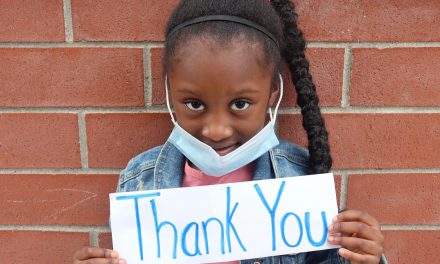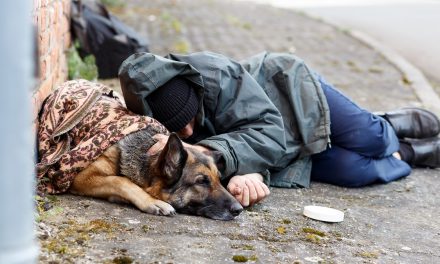The final installation in a series on suicide prevention highlighted the specific risk factors for college students across Missouri. “Suicide Prevention in Higher Education,” hosted by the Missouri Behavioral Health Council (MBHC), explored the reasons Missouri college students experience suicidal ideations and attempts and what roles family, friends, peers, and providers have in preventing them.
Margo Leitschuh led the presentation, detailing the work Missouri Partners in Prevention (PIP) has done to increase suicide prevention efforts among Missouri campus students and faculty. Leitschuh serves as the communications coordinator for PIP, a grant-funded coalition of 24 colleges and universities throughout the state helping implement strategic plans for suicide prevention.
Suicide Among Missouri College Students
According to Leitschuh, suicide is the second leading cause of death in Missouri for individuals ages 18 to 24. College students in this age range are especially at risk due to the risk factors associated with college, such as being away from home and a primary support system, economic pressures related to living alone, and substance misuse as students may begin to experiment with drugs. Mental health concerns especially may present at this age, especially when coupled with substance use.
“College in and of itself can be a protective environment as well — having a community, having lots of resources, there is that cohesion that’s built into college spaces,” said Leitschuh. “But there is a little bit of give and take, knowing that those risks and protective factors don’t cancel each other out — suicide is a very complex thing. There are certain factors that may put a student at risk.”
The Missouri Assessment of College Health Behaviors (MACHB) study is an annual online survey utilized by PIP to determine factors for suicidal thoughts and attempts among students. The survey features nearly 200 questions on suicide, mental health, stress, interpersonal violence, and more factors and ir provided to a random sample of the campus population.
According to the 2021 survey data presented during the webinar, 46% of students reported having suicidal thoughts in their lifetime, with nearly 25% having suicidal thoughts in the past year and 1.65% percent reporting attempts in the last year. While PIP does not collect data on suicide deaths by Missouri college students annually, the national average is about 1,100 college students per year, according to Leitschuh.
“We know as we conduct this survey and have this data that there are students who aren’t captured in this, who don’t take our survey, who never will,” she said. “These are conservative estimates based on sampling bias and things like that. This is a growing concern among our campuses and something we are wanting to put more attention on.”
The survey also records demographics, as students belonging to specific identities or other subpopulations may face higher risk factors. Suicidal ideation is higher among students who identify as LGBTQ (46%), students who identify as transgender or nonbinary specifically (62%), students with disabilities (42%), students who are veterans or active military (22%), or students who are Black or Indigenous People of Color (27%).
The survey also questions whether students are considering transferring or quitting, why, and if this plays a factor in their suicidality. According to the 2021 results, 46% of students interested in transferring or quitting showed suicidal ideation within the last year. Students may want to leave school for many reasons, including issues stemming from discrimination due to their identity. Because of this, it’s important to identify wanting to leave school as an opportunity to intervene.
“When we think about where we need to provide attention or resources on campus, we know that students who are considering transferring or quitting — that may be a factor,” Leitschuh said. “We need to think about that population.”
Seeking Help for Suicide
As part of the survey, students are also asked if they currently or have ever sought help for suicidal thoughts. Out of the students who did seek help, 35% sought off-campus mental health providers, 22% saw a university health provider, 13% saw an off-campus medical doctor, 13% sought help from “other” (including family and friends), and less than 5% each went to a hospital emergency room, religious or spiritual advisor, or a university health center.
Family, friends, peers, and romantic partners were intentionally kept off the survey as providers wanted data specifically regarding which professional help was being sought out by students. However, they plan to add this as a specific option to future surveys to continue tracking the importance of engaging personal support systems.
“We know we need to work with those folks to make sure they’re getting good, evidence-based clinical care training and are able to address suicide,” Leitschuh said. According to the survey, 55% of students did not seek help (with the remaining percentage choosing not to respond). Barriers for seeking help included:
- Feelings of shame – 42%.
- Not thinking assistance was necessary – 40%.
- Fear of being judged – 34%.
- High costs or insurance not covering care – 30%.
- Fear of hospitalization – 26%.
- Thinking it would be unhelpful – 25%.
- Not knowing any resources – 11%.
- Not having health insurance – 9.4%.
To help combat these barriers, the survey focuses on peer support: If students are more likely to go to their friends when feeling suicidal, how prepared are these fellow students to help prevent suicide?
While some survey participants felt neutral or unprepared, 62% felt positively confident in their ability to bring up the topic of suicide with an at-risk friend. When asked how likely they were to refer a friend thinking about suicide to a local resource, even more responded positively — 83% of students felt confident referring a suicidal friend to help.
Missouri Efforts to Address Suicide
Missouri PIP uses a comprehensive approach to suicide prevention, based on Substance Abuse and Mental Health Services Administration (SAMHSA) framework. “We want to recognize what the problems and related behaviors are among students, and know how to address those,” Leitschuh said. The framework includes:
- Assessment – using the annual MACHB survey.
- Capacity – determining what resources are at the university’s disposal to address suicide, and what the readiness is of the community to help prevent suicide.
- Planning – creating a strategic plan each year on file with PIP.
- Implementation – implementing the strategic plan.
- Evaluation – assessing if the strategic plan worked, and if not, what needs to change.
The goal of this approach is to boost and promote the protective factors for students, such as community, while minimizing the risk factors for student suicide, such as stigma. While many approaches and models effectively reach this goal, most focus on two key components: identifying and assessing risk factors specific to the population and increasing motivation to seek help among struggling students.
To identify and assess suicide risks among students, some Missouri colleges have incorporated suicide risk screenings in clinical settings when students complete intake forms for health appointments on campus. Other colleges have instead utilized one-off screening or mental health awareness events, offering screenings only to those interested, with support in place to help those at immediate risk.
Regularly providing information to students about campus resources, hotlines, and other crisis response services is also crucial. “We know that students are bombarded with a lot of information, they have a lot of things grappling for their time and attention,” Leitschuh said. “They need to be doing as much as they can to provide resources to students and let them know about them.” Social media and marketing campaigns regarding suicide prevention and need-to-know crisis numbers can be instrumental in saving a life on campus.
Perhaps most important is implementing suicide prevention recognition and referral training so family members, friends, peers, faculty, and more can recognize a student at risk and refer them to resources. Because students frequently seek help from their personal support systems over providers, equipping these circles with the correct suicide prevention tools is a necessary step in preventing student suicide.
While identifying at-risk students is important, it only solves half the problem — those at-risk can’t receive help if they aren’t motivated to seek it. To start, Leitschuh suggests increasing awareness of resources among college campuses. “For some students, that is enough, to just know that resources are out there if they feel empowered to seek those out,” she said.
However, much of the reason students aren’t seeking help is out of fear of shame or stigma. To combat this, some campuses added a survey question asking if students felt it was okay for others to seek help for their mental health. The first to do so saw upwards of 90% of respondents say yes, it is okay. “That’s a really powerful norm for them to be able to share and encourage and to say, ‘Other students care about you and want you to seek help if you need it’,” Leitschuh said.
This is especially true for student group leaders, college dorm Resident Assistants (Ras), and other influential mentors in the lives of college students. Training peer educators and leaders to promote help-seeking among the students they serve could make all the difference.
“Peer-to-peer services are so important in college and on college campuses,” Leitschuh said. “We always encourage the student leaders and influencers — the folks on campus who really grab the attention of other students and make a difference — to make sure they are trained, and they know how to promote help-seeking.”
For students who are involved in national suicide prevention groups such as Active Minds or Preventing Suicide, this kind of training is necessary. “Finding the students who are passionate about this work — maybe who have had experiences or want to make a difference — those are really the people students listen to,” Leitschuh said. “They listen to each other, and they can really be the champions of this work.”
Resources
Missouri PIP uses the Ask. Listen. Refer. (ALR) Program as a brief introduction into suicide prevention training for staff and students. The 20-minute online training teaches participants to:
- Understand scope of suicide among college students.
- Identify the risk factors, protective factors, and warning signs of suicide.
- Respond to and get help for people in need — how to have that conversation, listen, and refer them to resources.
This training can be offered as part of required training for incoming students, annual training for faculty, offered during presentations and events, and more. To learn more about ALR, visit https://www.asklistenrefer.org/.
The coalition also has free training available for Missourians that does not focus specifically on college populations. To learn more about Missouri ALR, visit https://www.moasklistenrefer.org/main.
To learn more about Missouri PIP, visit https://www.mopip.org/.
To learn more about suicide prevention across colleges and universities in Missouri, watch the recorded presentation: https://missouribhc.app.box.com/s/159f7wrbtrud747hf6zbs32qut7xtadk.
Read part one of the Suicide Prevention Series.
Read part two of the Suicide Prevention Series.
Read part three of the Suicide Prevention Series.








